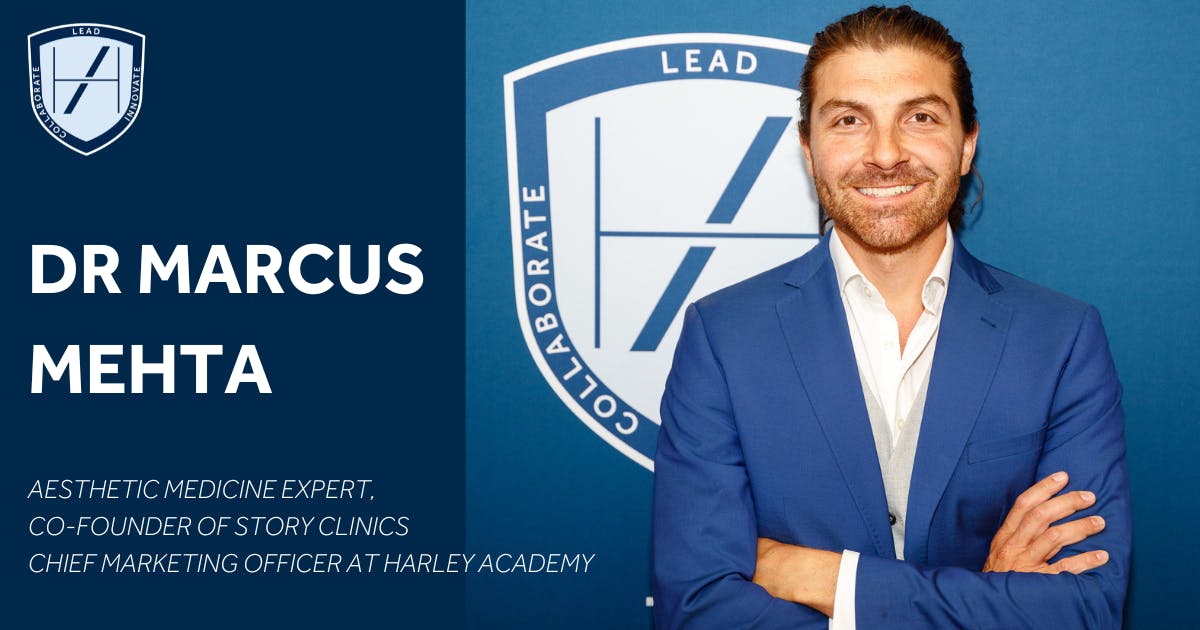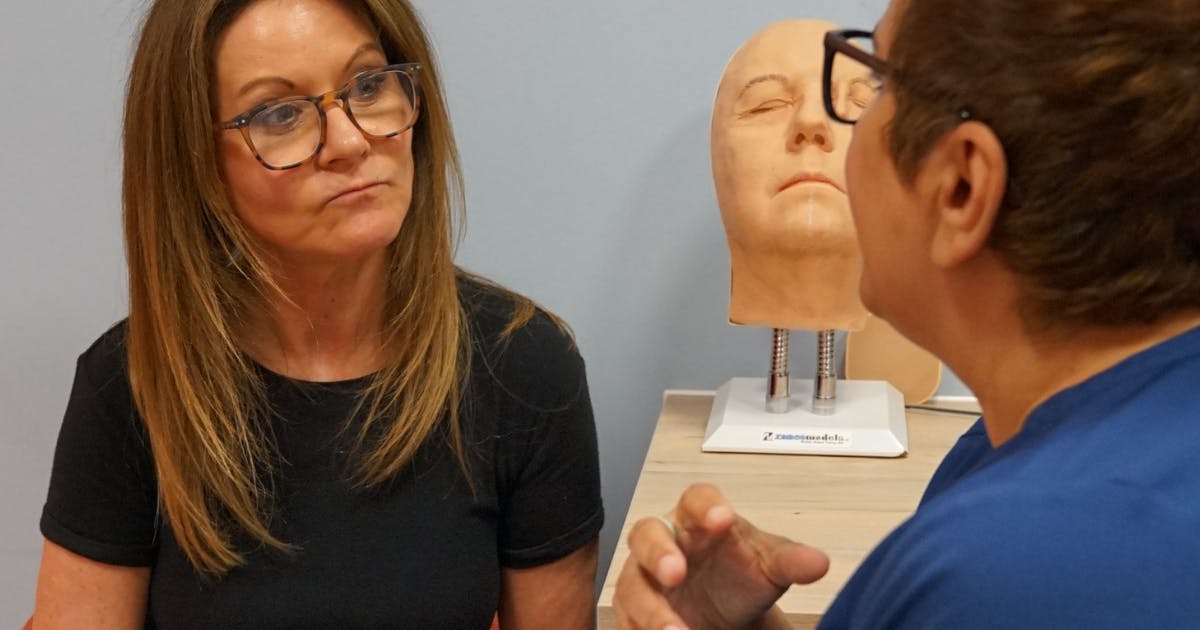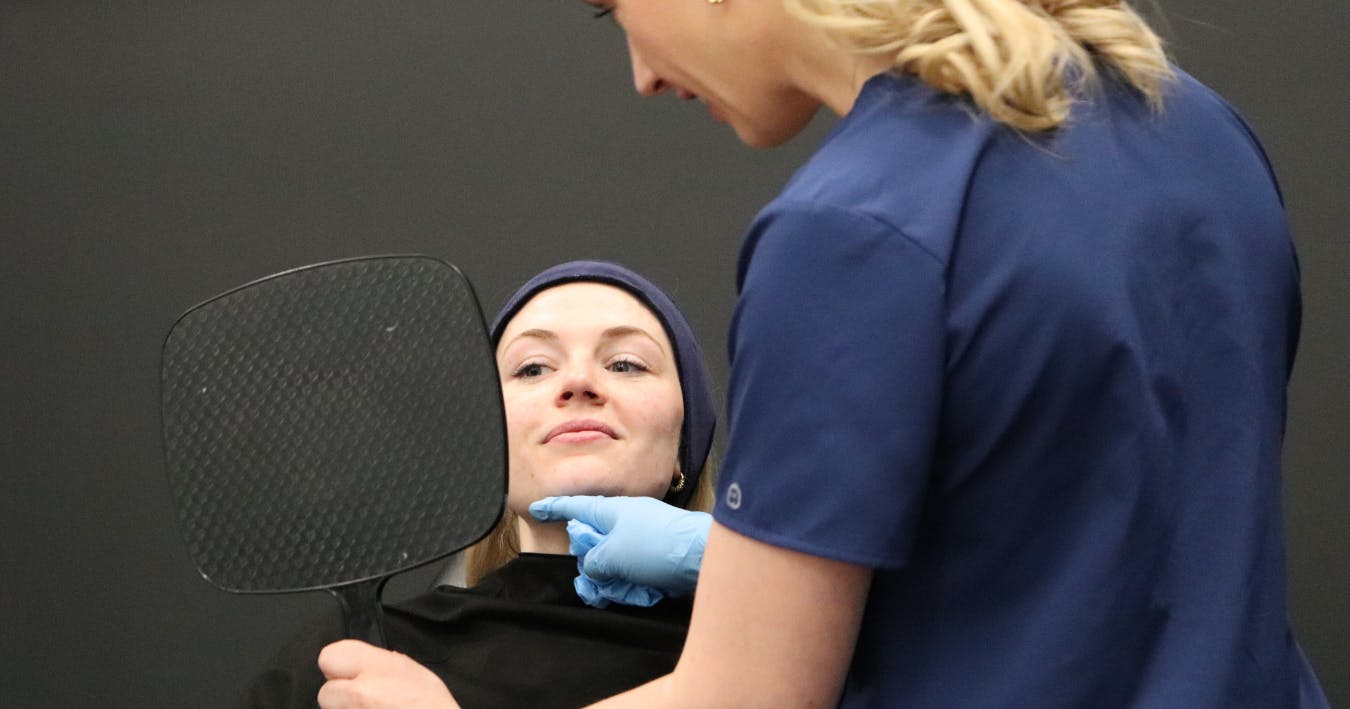How Quickly Can I Make My Money Back on Aesthetics Training?

“How quickly can I make my money back on aesthetics training?” This has to be one of the most frequently asked questions we get from medics before they start out.
And it’s easy to understand why. When you’re paying upwards of £3,000 for a filler and botox course, you want to know when you’ll see a return on your investment.
Even if you’re looking to start a medical aesthetics career for non-financial reasons - such as seeking a better work/life balance with more control over your schedule - it’s pertinent information.
To get some real-world insights into how long it takes to make your money back on aesthetics training, we spoke to Dr Marcus Mehta. Dr Marcus is our Chief Marketing Officer, co-founder of STORY Clinics and a practising aesthetic medicine expert.

What treatments did you offer when you first started practising aesthetic medicine?
“When I first started, I only offered botulinum toxin for my first year of practice,” says Dr Marcus. “This is because I was slightly scared of treating patients with filler. The reason for this is that I only did a one-day course - that was all that was available at the time. So, I only felt comfortable with toxin and then built myself up to doing filler treatments.”
How long after this did it take for you to start introducing other treatments?
“So, after the first year I started doing some simple filler treatments. I started doing mid-face cheek filler, I started doing lower face jawline filler. Then I started doing lip filler although that took me many years to get good at,” he shares.
“After I learned and got good at the mid-face, lower face and lips, I stuck with that for a long time. Even today, over eight years later, these are still the treatments that I carry out the most. Although there are a lot of other treatments on the market, for me, being able to offer the core treatments well - so, three areas of toxin, mid-face, jawline and lower face and lip filler - you can pretty much treat 90 percent of patients that come through your door. You don’t need to be offering more advanced, more ‘risky’ treatments, unless you want to over time.
“A lot of very successful aesthetics clinics in the UK just do the basics well. This is one of the fundamentals I’d always say to new aesthetic practitioners is to learn to do the basics well and that will put you in a really good space to grow a clinic and go ahead and offer more advanced treatments. But offering the basics well is more than enough to have a successful aesthetics business.”
How long did it take you to get to having a fully booked-up clinic day?
“It took me about three years to get three fully booked clinic days per week, 10am to 5pm. Social media wasn’t as much of a thing for growing an aesthetics following when I started so I built my patient list by networking locally. I still think this is the best form of sustainable marketing for establishing a loyal clientele. However, now you can also use social media on top of that, which is a great way for some injectors to develop their following. I would not rely solely on social media for business growth, though.”
Tell us more about how you used local networking to establish your clinic
“I thought about my ideal clients and what their lifestyle was like. Where did they go, locally? The main place I came up with was a local salon. I offered to treat some of the stylists there and established a referral network. Through this, I met a personal shopper who became a fantastic client and a fantastic referral source. I still treat some of these hair stylists and people they’ve referred to this day. It’s a brilliant way to develop long-lasting relationships within your community.”

What’s the average mark-up on injectable treatments in the UK?
“On average, treating three areas of Botox will cost around £300 in the UK. Price-wise, if we’re talking about just the vial of neurotoxin used during that treatment, this will cost around £60-80, depending on how much you buy. Obviously, if you start buying in large quantities, you’ll receive a discount which lowers the per unit price.
“So, let’s say a vial of toxin is £70 and you then charge around £300 for the treatment.
“On top of just the botox, you have your consumables, the rent on your premises, your insurance, et cetera. However, from £70 to £300 you still have a health mark-up on toxin treatments.
“When it comes to lip filler, cheek filler, jaw and chin filler, you’re looking at a fairly similar price point. The filler itself will cost on average, probably £70-80 per syringe, with filler treatment prices being around £300. Lip filler tends to be priced slightly lower than this, at a more accessible price point, usually around £250. So, again, you’re looking at a solid mark-up on filler treatments.”
How quickly can healthcare professionals make their money back on aesthetics training courses?
This is a question we get asked a lot so we thought we’d put it to Dr Marcus to answer! We asked him what a realistic timeframe would be for making back the initial course fees outlay on a variety of our medical aesthetics courses.
The Aesthetics Accelerator course
“For those taking an entry-level aesthetics course, such as The Aesthetics Accelerator, I’d say you’d be looking at around 18 months of practice to make your money back. This would mean you’d need to make roughly £223 of net profit from your aesthetics practice each month.”
Level 7 Diploma in Botox & Dermal Fillers
“When it comes to the Level 7 Diploma in Botox & Dermal Fillers, as you’re training in a more comprehensive way, you get more comprehensive experience. As such, you’ll probably be able to offer more treatments, more confidently and quicker, compared to taking the Accelerator course. You can start practising once you’ve obtained your insurance - which you can do as soon as you’ve completed the Foundation Training element of your Level 7 Diploma course. This means you can start practising and building up your business alongside training; you don’t have to wait until you’ve finished your course to start finding patients.
“Again, I’d recommend allowing 18 months as part of your business plan to give yourself breathing space, though it’s entirely possible to make your training investment back quicker. This would require you to make around £612 of net profit per month from aesthetics.
“If you consider these figures in light of the mark-up amounts I’ve just outlined, it shouldn’t seem too daunting!”
Combined Level 7
“Our Combined Level 7 course offers not just injectables training, via our Ofqual-regulated Level 7 Diploma in Botox & Dermal Fillers, but also skin treatments through our Cosmetic Dermatology Course.
“For me, the fact that you do have skin treatments puts you at a greater advantage. When I started, I underestimated how much money you can make from skincare. It’s a fact that almost every one of your patients who comes through the door could benefit from using an SPF. So if you sell a £30 SPF to each of your patients, when you add that up, it equates to quite a lot of money.
“The other benefit of offering skin treatments is that you get to see your patients more regularly than you do for injectables. The minimum timeframe for seeing people again is around 3 months for toxin and 6 to 9 months for filler. Seeing patients every 2-4 weeks or so, which you can do if you’re offering microneedling or chemical peels, for example, is a great way to make more revenue, quicker and provide added services to your injectable patients. It’s also a fantastic way to build and nurture relationships with your patients who will then, hopefully, refer others to you.”

How to put £2,000 per month towards recouping your aesthetics course fees
Based on the information Dr Marcus has provided, looking solely at the price of the treatment at cost versus retail and not including other consumables or overheads, here’s an example of what you’d be looking at…
If you complete the following in a month:
3 x lip filler (£250)
6 x cheek filler/lower face filler (£300)
6 x 3 areas of toxin (£300)
Based on each syringe of filler or vial of toxin costing £70, you’d make a gross profit of £3,300. After VAT at 20% you’d be left with £2,640.
Let’s round that down to £2,000 per month to allow for operating costs and you’ll see how quickly you can start to earn those course fees back!
Is it harder to make your money back quickly if you start working as an aesthetics practitioner on a part-time basis?
“In one way, yes,” confirms Dr Marcus. “If you start working part-time, you’re likely less committed to it and it’ll take you longer to ‘get good’. This is because you’re always ‘dabbling’ and it can take longer to build your confidence as an injector this way.
“However, you could use this time whilst you’re supporting yourself financially with other healthcare work as a chance to build up your social media profile. This way you can start reaching out to local areas and businesses to start finding new clients.
“There’s pros and cons to each side but all the skill sets that healthcare professionals carry - good consultation skills, rapport building, ability to take a good history - are all fundamental things that will help you in your aesthetics career. They’re all transferable skills and, as part of your healthcare job, you deal with patients regularly, which you can carry straight into aesthetics.”
Are there any other ways to make your money back on aesthetics training quicker?
We know getting started in aesthetics is not all about the money for many medical professionals. However, we’re also sure that no one objects to earning more money for their services! With this in mind, we asked Dr Marcus for his advice on expediting and expanding your earning potential as a new aesthetic practitioner.
Offer a small range of selected skincare products
“For me, it’s more about the products you can sell,” he notes. “A good tip I had when I started was that you know patients need an SPF, you know they probably need a retinol and a vitamin C, for example. So I’d focus on one product for a week and make a point of having a conversation with my patients around, for example, SPF. I’d talk them through the importance of wearing it every day, the anti-ageing benefits as well as for skin cancer protection. By making that the focus of my week, I’d try to sell as many products of that type, during that week. It became a kind of game I’d play.”
You don’t need to offer a huge range of skincare products, just select those you know your patients could benefit from. As Dr Marcus advises, most people will see good results from a daily SPF and regular vitamin C and retinol use. These are three products you can start by stocking, just do your research into which products you like and can sell at a price point that suits your patient demographic.
The Cosmetic Dermatology Course element of our Combined Level 7 will teach you all about ingredients and help you to build your knowledge of skincare formulations. This will build your confidence in researching different skincare products ahead of choosing which to stock.
Have a built-in audience or gain exposure to a complementary market
“If you have a built-in audience already, that’s definitely going to help you to make your training money back quicker. For example, if you work at a dental practice, you can easily send a mailshot out to your database introducing your aesthetics services. You can start talking to patients about these new treatments during their appointments and consultations, where appropriate.”
Dr Marcus suggests, “Gummy smile correction as part of a smile makeover can be a great place to start or simply asking patients if they’ve ever considered botox - just tread carefully with this one!
“Also, if you have friends or family who are involved in any other type of self-care business - maybe they’re a beautician, makeup artist or a hairdresser - then see if you can get exposure to their audiences. This could be through an event, leaflets or mailshots and could be a referral scheme, as I mentioned previously.
“I wasn’t lucky enough to have these types of connections when I started out but these types of relationships definitely allow you to start attracting more patients and, therefore, making more money, for sure.”
We hope this information was helpful; if you’d like further information on getting started in aesthetic medicine and finding the best aesthetics training course for your needs, book a call with our Course Advisors for personalised advice. Alternatively, you can attend our FREE events on Getting Started in Aesthetics. Book your free place now and prepare to have all your questions, answered!
All information correct at time of publication
Download our full prospectus
Browse all our injectables, dermal fillers and cosmetic dermatology courses in one document
By submitting this form, you agree to receive marketing about our products, events, promotions and exclusive content. Consent is not a condition of purchase, and no purchase is necessary. Message frequency varies. View our Privacy Policy and Terms & Conditions
Attend our FREE open evening
If you're not sure which course is right for you, let us help
Join us online or in-person at our free open evening to learn more
Our Partners














STAY INFORMED
Sign up to receive industry news, careers advice, special offers and information on Harley Academy courses and services

